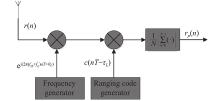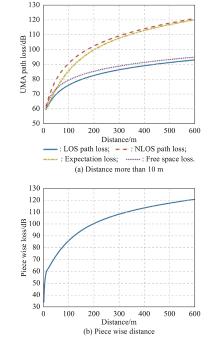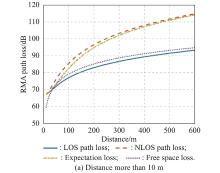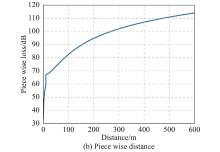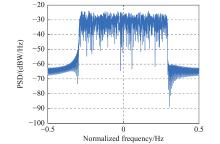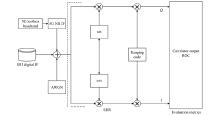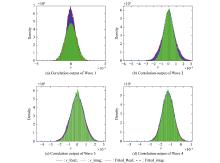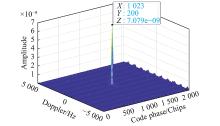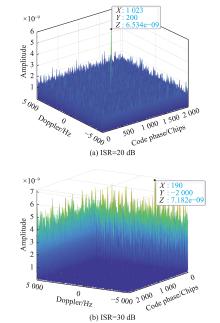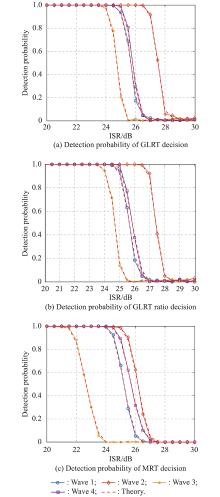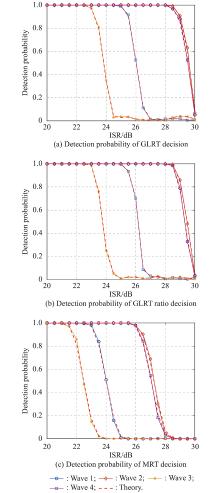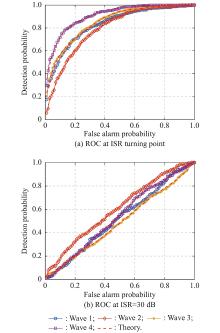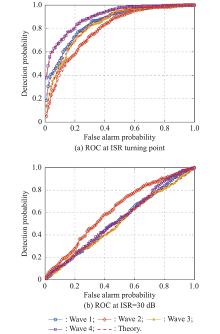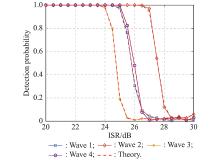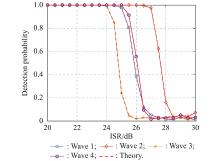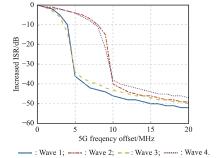| 1 |
China Satellite Navigation Systems Management Office. BeiDou Navigation Satellite System Signal In Space Interface Control Document (V3.0). 2019. http://en.beidou.gov.cn/SYSTEMS/ICD/201902/P020190227702348791891.pdf
|
| 2 |
O'DRISCOLL C, RAO M, BORIO D, et al. Compatibility analysis between LightSquared signals and L1/E1 GNSS reception. Proc. of the IEEE Position Location & Navigation Symposium, 2012: 447−454.
|
| 3 |
WILDEMEERSCH M, RABBACHIN A, CANO E, et al. Interference assessment of DVB-T within the GPS L1 and Galileo E1 band. Proc. of the 5th ESA Workshop on Satellite Navigation Technologies and European Workshop on GNSS Signals and Signal Processing, 2010. DOI: 10.1109/NAVITEC.2010.5708046.
|
| 4 |
APILO O, HIIVALA M, KUOSMONEN A, et al. Measured GPS performance under LTE-M in-device interference. Proc. of the 9th ESA Workshop on Satellite Navigation Technologies and European Workshop on GNSS Signals and Signal Processing, 2018. DOI: 10.1109/NAVITEC.2018.8642666.
|
| 5 |
CHU H L, GAO Y, LU M Q Test and analysis of the compatibility of S-band GNSS signal and its adjacent band signals. Journal of Telemetry, Tracking and Command, 2018, 39 (3): 1- 7.
|
| 6 |
ZHANG H T Analysis on spectrum interference coordination in 5G NR systems. Mobile Communications, 2019, 43 (2): 38- 42.
|
| 7 |
CARFANO G, MURGUIA H, GUDEM P, et al. Impact of FR1 5G NR jammers on UWB indoor position location systems. Proc. of the International Conference on Indoor Positioning and Indoor Navigation, 2019. DOI: 10.1109/IPIN.2019.8911756.
|
| 8 |
TERCERO M, SHARMA S, COLDREY M, et al. Coexistence between 5G and fixed services. Proc. of the IEEE 83rd Vehicular Technology Conference, 2016. DOI: 10.1109/VTCSpring.2016.7504168.
|
| 9 |
SON H K, CHONG Y J. Coexistence of 5G system with fixed satellite service Earth station in the 3.8 GHz band. Proc. of the International Conference on Information and Communication Technology Convergence, 2018: 1070−1073.
|
| 10 |
KIM S, VISOTSKY E, MOORUT P, et al Coexistence of 5G with the incumbents in the 28 and 70 GHz bands. IEEE Journal on Selected Areas in Communications, 2017, 35 (6): 1254- 1268.
doi: 10.1109/JSAC.2017.2687238
|
| 11 |
WANG P, WANG Y Q, YU X L, et al Performance comparison of code discriminators in the presence of CW interference. Wireless Personal Communications, 2016, 89, 405- 426.
doi: 10.1007/s11277-016-3272-2
|
| 12 |
DAI X Z, NIE J W, LI B Y, et al. Performance of GNSS receivers with AGC in noise pulse interference. Proc. of the 5th International Conference on Computer Science and Network Technology, 2016: 735−740.
|
| 13 |
BEK K M, SHANEEN M E, ELGAMEL S A Mathematical analyses of pulse interference signal on post-correlation carrier-to-noise ratio for the global positioning system receivers. IET Radar, Sonar & Navigation, 2015, 9 (3): 266- 275.
|
| 14 |
BEK K M, SHANEEN M E, ELGAMEL S A Classification and mathematical expression of different interference signals on a GPS receiver. Navigation: Journal of The Institute of Navigation, 2015, 62 (1): 23- 37.
|
| 15 |
ZHANG C, SHUI L, HUANG H, et al Research on the mechanism and the impact of jamming on BeiDou software receiver. Proc. of the IEEE Chinese Guidance, Navigation and Control Conference, 2016, 198- 202.
|
| 16 |
JEONG S, SIN C S GNSS interference signal generation scenario for GNSS interference verification platform. Proc. of the 15th International Conference on Control, Automation and Systems, 2015, 1363- 1365.
|
| 17 |
TS 38.104 V15.5.0. Technical specification group radio access network, base station (BS) radio transmission and reception. France: European Telecommunications Standards Institute, 2019.
|
| 18 |
WEN R H, LIU Z J, SHEN J M Compatibility analysis of the BDS and the 4G mobile communication system. Geomatics Science and Engineering, 2014, 34 (4): 65- 69.
|
| 19 |
ITU-R Report M.2142-0. Guidelines for evaluation of radio interference technologies for IMT-2020. Geneva: Electronic Publication, 2017.
|
| 20 |
STEPHEN M, HADI W, KAREN V D, et al. DOT GPS adjacent band compatibility assessment test results. Proc. of the International Technical Meeting of the Institute of Navigation, 2017: 637−661.
|
| 21 |
PARK J, LEE E, PARK S, et al Modeling and analysis on radio interference of OFDM waveforms for coexistence study. IEEE Access, 2019, 7, 35132- 35147.
|
| 22 |
LI Y F, SHIVARAMAIAH N C, AKOS D M. An open source BDS-3 B1C/B2a SDR receiver. Proc. of the ION ITM Institute of Navigation, 2018: 826–836.
|
| 23 |
LI Y F, SHIVARAMAIAH N C, AKOS D M Design and implementation of an open-source BDS-3 B1C/B2a SDR receiver. GPS Solutions, 2019, 23 (60): 1- 16.
|
| 24 |
XIE G. Principles of GPS and receiver design. Beijing: Electronics and Industry Press, 2008.
|
| 25 |
Mathworks. 5G Toolbox. https://www.mathworks.com/products/5g.html.
|
| 26 |
GEIGER B C, VOGEL C, SOUDAN M Comparison between ratio detection and threshold comparison for GNSS acquisition. IEEE Trans. on Aerospace and Electronic Systems, 2012, 48 (2): 1772- 1779.
|
| 27 |
SLUMP C H, QUEK T Q S, RABBACHIN A. GNSS signal acquisition in harsh urban environments. Proc. of the IEEE International Conference on Communications Workshops, 2013: 62−67.
|
| 28 |
ZIEMER R E, PETERSON R L. Digital communications and spread spectrum systems. New York: Macmillan and Collie, 2008.
|
| 29 |
BORRE K, AKOS D M, BERTLSEN N, et al. A software-defined GPS and Galileo receiver: a single-frequency approach. New York: Springer, 2007.
|
| 30 |
BENACHENHOU K, HAMADOUCHE M, TALEB-AHMED A New formulation of GNSS acquisition with CFAR detection. International Journal of Satellite Communications and Networking, 2017, 35 (3): 215- 230.
doi: 10.1002/sat.1177
|
 ), Xue WANG4,*(
), Xue WANG4,*( ), Decai ZOU1,5(
), Decai ZOU1,5( ), Ziyue CHU1,2,3(
), Ziyue CHU1,2,3( ), Yao GUO1,2,3(
), Yao GUO1,2,3( )
)
